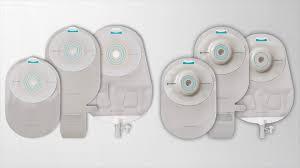Ostomy Devices Market Trends in Durable, Cost-Effective, and Patient-Friendly Products Across Global Regions

The global ostomy devices market is increasingly being shaped by demand for solutions that not only meet medical needs, but also emphasize durability, affordability, and comfort. Patients and providers are pushing for devices that last longer, cost less over time, and are easier and more pleasant to use. Across different geographies, manufacturers are responding to varying priorities — from premium comfort in mature markets to basic reliability in cost‑sensitive regions.
Key Trends Driving Durability, Cost‑Efficiency, and Patient Comfort
1. Enhanced Material Technologies for Durability & Wear Time
Manufacturers are investing in adhesives, barrier materials, and pouch films that resist wear, maintain seal integrity, and reduce skin irritation. Ultra‑thin films that still provide strength, breathable materials that reduce moisture buildup, and odor‑resistant layers are becoming standard for higher‑end products. Improved adhesives and mouldable barriers help reduce leakage and extend the period a device can be worn without compromise of comfort.
2. Two‑Piece & Modular Systems for Flexibility & Long‑Term Use
Two‑piece systems are gaining preference because users can replace pouches without disturbing the skin barrier. This modular approach not only improves comfort but reduces waste and cost over time. Barrier rings, customizable flanges, and interchangeable components allow for better fit, easier maintenance, and longer life of individual components.
3. Focus on Skin Health & Comfort Features
Skin irritation is among the top complaints for ostomy users. Products with hypoallergenic adhesives, softer edges, pH‑balanced materials, and cushioning around stomas are being developed. Designs that reduce friction, allow better airflow, and minimize pressure points are also increasingly popular. Quiet, discreet pouching, softer materials for wafer edges, and fabrics that blend or conform with body contours help improve patient acceptance and reduce psychological burdens.
4. Cost‑Sensitive Innovations & Affordable Alternatives
In many low‑ and middle‑income regions, cost is a major barrier. The shift here is toward cost‑efficient production, simpler designs with essential features, and local manufacturing to reduce import and distribution costs. Generic or value brands are introducing products that cover the basic functional requirements (barrier, pouch, closure) at lower prices. Over time, increased competition in these markets helps drive down costs even for more advanced models.
5. Direct‑to‑Consumer & Digital Channels to Reduce Costs & Improve Access
Online sales, subscription models, and telehealth‑based ordering are enabling better access, particularly in regions with sparse physical supply infrastructure. These channels also reduce overhead, allowing lower margins while preserving quality. Patients are increasingly comfortable with remote ordering, discrete packaging, and delivery where mobility or access is limited.
6. Sustainability Efforts with Durable and Eco‑Friendly Designs
Environmental concerns are influencing the design of ostomy devices. Durable materials that reduce frequency of replacement, recyclable or biodegradable components, less plastic packaging, and improved disposal options are gaining attention. Even in cost‑sensitive regions, if durability is coupled with sustainability, patients and health systems see it as added value.
Regional Differences & Emerging Patterns
North America & Western Europe
In mature markets, patient expectations are high. Users demand devices with long wear time, minimal skin issues, discreet and low‑profile designs, and comfort features. Here, premium pricing is more accepted, reimbursement systems often cover advanced features, and digital accessories (apps, sensors) are being added. Sustainability and environmental impact are increasingly factored into purchasing decisions.
Asia‑Pacific
In Asia‑Pacific, growth is being driven by rising awareness, increasing surgical volumes, and growing healthcare expenditure. However, cost remains a critical factor. There's a dual market: one for premium, comfort‑oriented devices (especially in urban areas), and another for basic, durable solutions in more rural or lower‑income zones. Local manufacturing, value brands, and innovation in cost containment (e.g. simpler packaging) are key.
Latin America & Middle East & Africa
In these regions, access and affordability are often more pressing than high‑end features. Patients and providers tend to prioritize durability (so that fewer replacements are needed), ease of use (especially for people with limited caregiver support), and basic comfort (good adhesives, odor control) over premium aesthetics. NGOs, government programs, and health systems can influence demand by subsidizing durable and affordable products.
Eastern Europe & Central Asia
These areas often straddle the line between cost‑sensitive and performance‑oriented markets. Because of growing healthcare systems and increased funding, there is rising demand for better comfort and durability, but price remains a major concern. Products that offer “good enough” comfort at mid‑price points tend to do well.
Opportunities & Challenges
Opportunities:
-
Tiered product portfolios: Offering basic, mid‑range, and premium options enables companies to cater to different segments; premium features drive margins, basic models drive volume.
-
Local production & supply chain optimization: Reducing costs by making components closer to end users.
-
Patient feedback‑driven design: Leveraging user interviews, trials, and data to identify what features make most difference in comfort/durability.
-
Durability as a selling point: Marketing that emphasizes fewer changes, less irritation, and longer wear times can resonate with both users and payers.
-
Collaborations with payers & governments for reimbursement support of more durable or long‑wear products, which may reduce long‑term healthcare costs (skin complications, hospital visits).
Challenges:
-
Manufacturing cost pressures when using advanced materials.
-
Regulatory compliance across regions may limit rapid introduction of new materials or adhesives.
-
Ensuring affordability without compromising performance.
-
Balancing durable product lifetimes with hygiene‑related replacement requirements.
-
Ensuring supply chain reliability, particularly for specialized materials.
What the Future Holds
Looking ahead, the ostomy devices market is likely to see:
-
More hybrid models combining two‑piece systems with sensor or “smart” alert features.
-
Innovations in adhesives that adapt to moisture or skin changes and more forgiving to movement.
-
Wearable designs that adapt visually and physically to users—low‑profile, quiet, shape‑conforming.
-
Reusable or semi‑reusable components where hygiene can be maintained, especially in cost‑sensitive or environmentally conscious users.
-
Stronger role of e‑commerce, remote monitoring, and patient education to support optimal use and reduce waste (from premature replacement or misuse).
In summary, across global regions the ostomy devices market is trending decisively toward more durable, cost‑effective, and patient‑friendly solutions. Markets that succeed will be those that understand the local balance between affordability and comfort, invest in better materials and design, and build delivery systems (manufacturing, distribution, education) that support long‑term use and patient satisfaction.
- Vibnix Blog
- Politics
- News
- Liberia News
- Entertainment
- Technology
- Educaţie
- Art
- Causes
- Crafts
- Dance
- Drinks
- Film
- Fitness
- Food
- Jocuri
- Gardening
- Health
- Home
- Literature
- Music
- Networking
- Alte
- Party
- Religion
- Shopping
- Sports
- Theater
- Wellness



